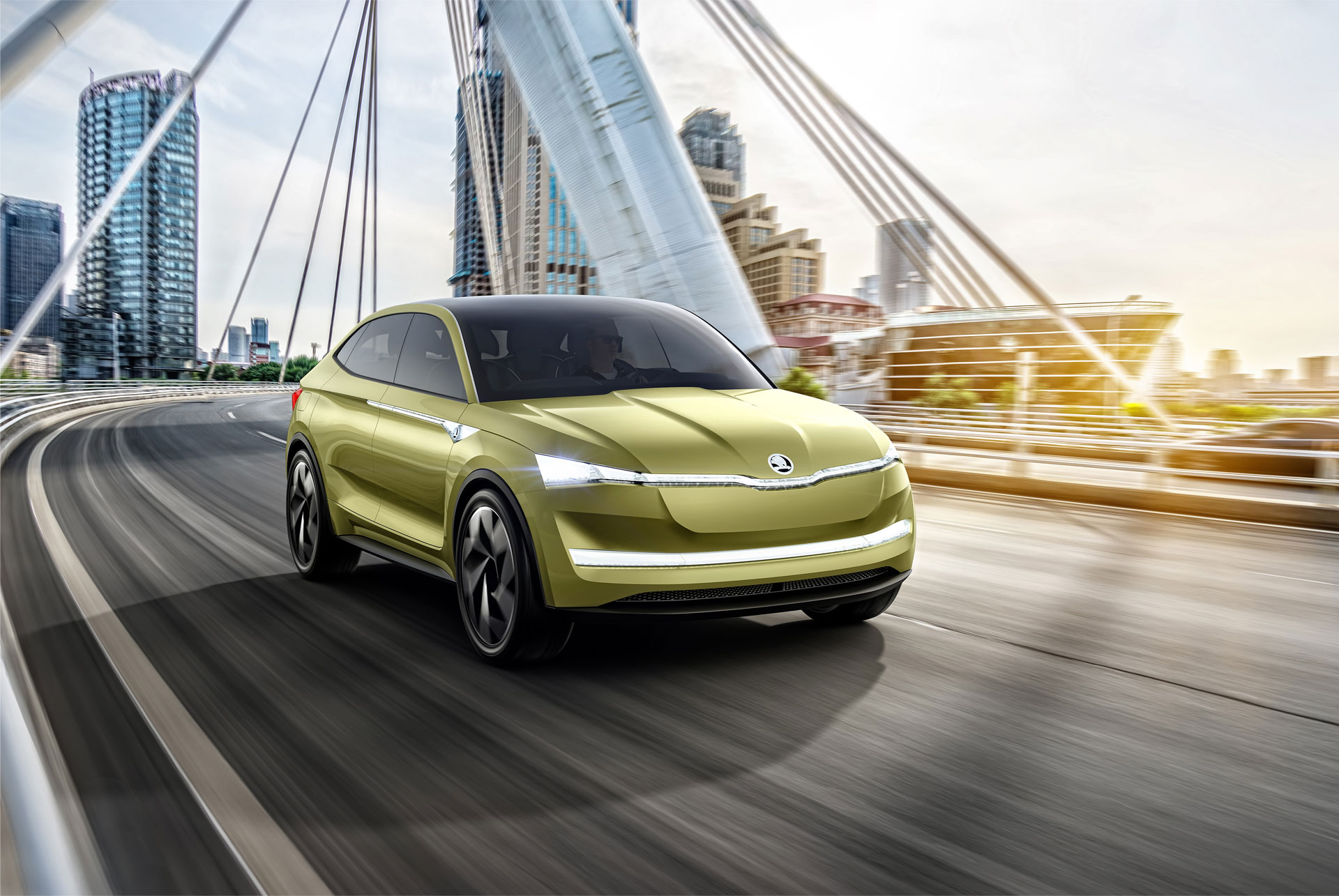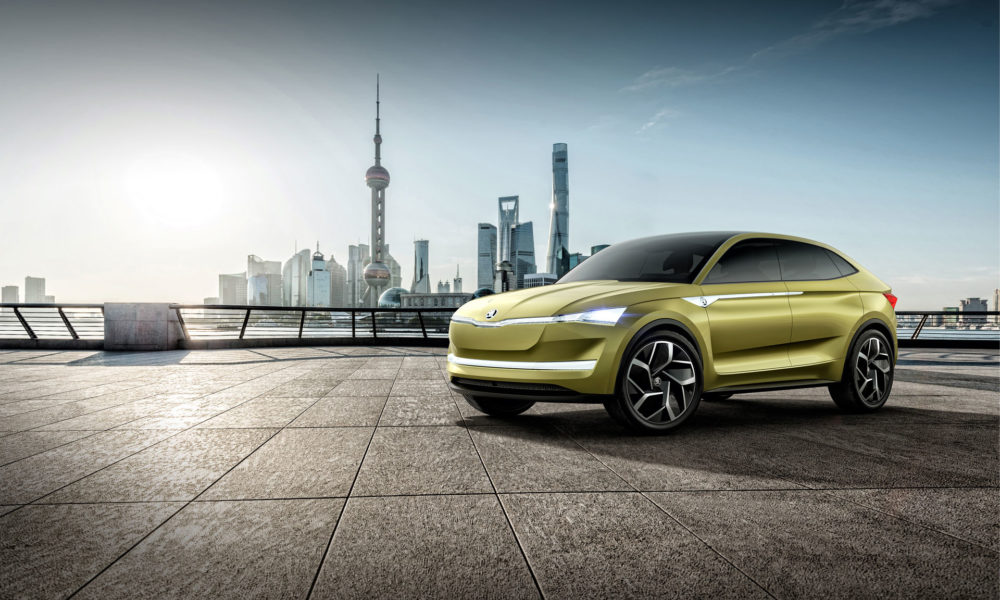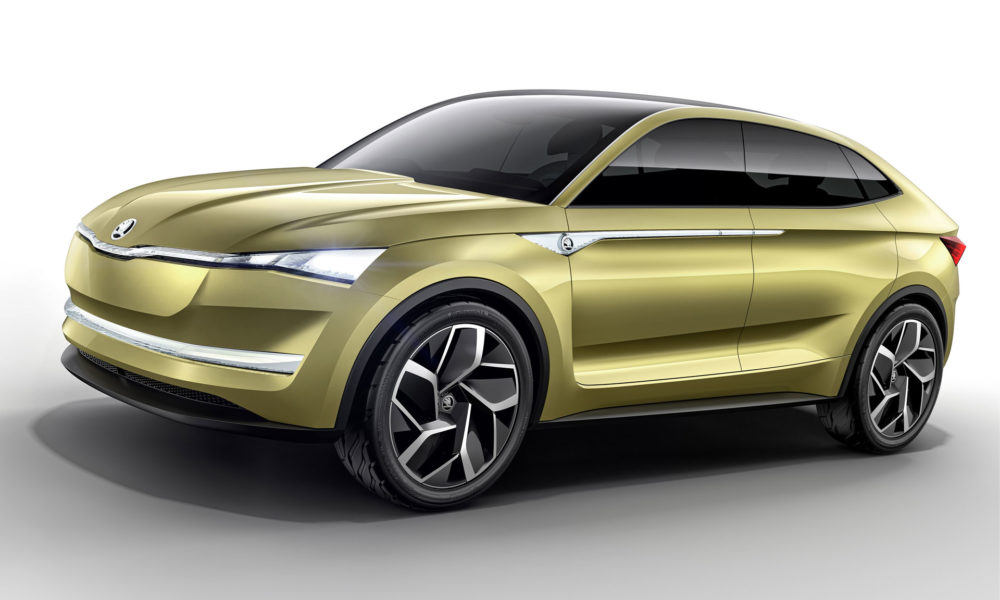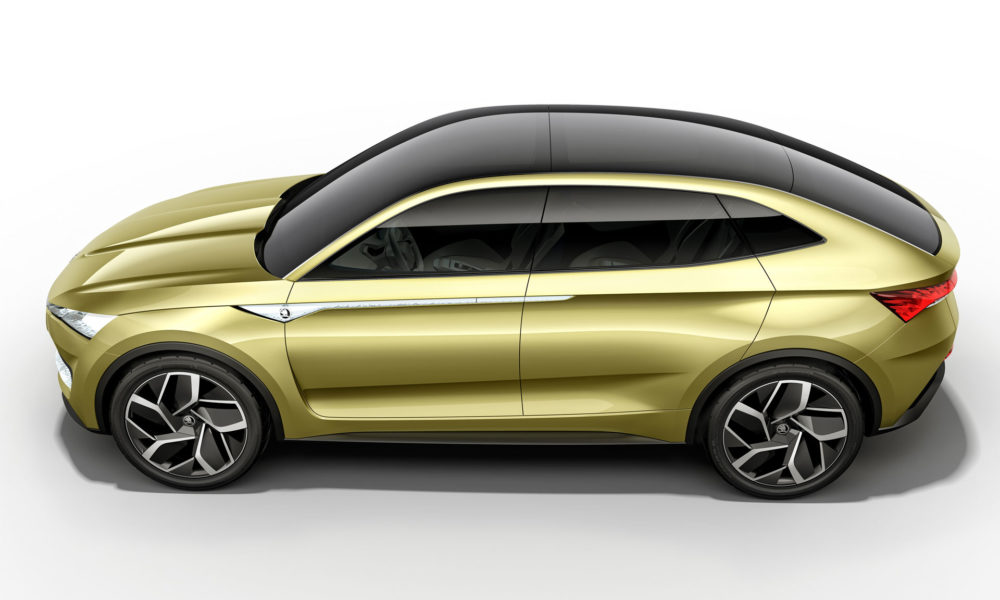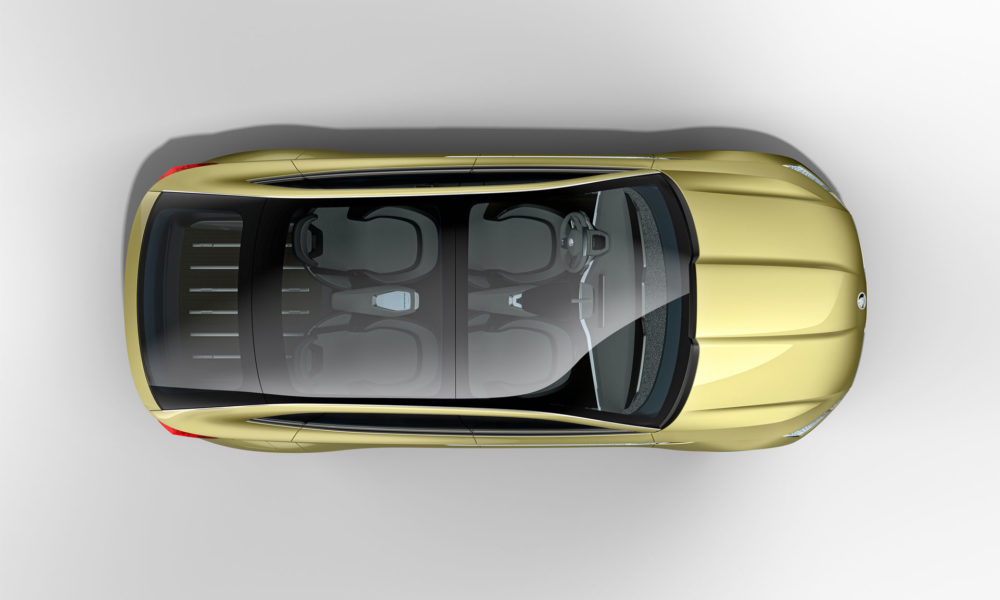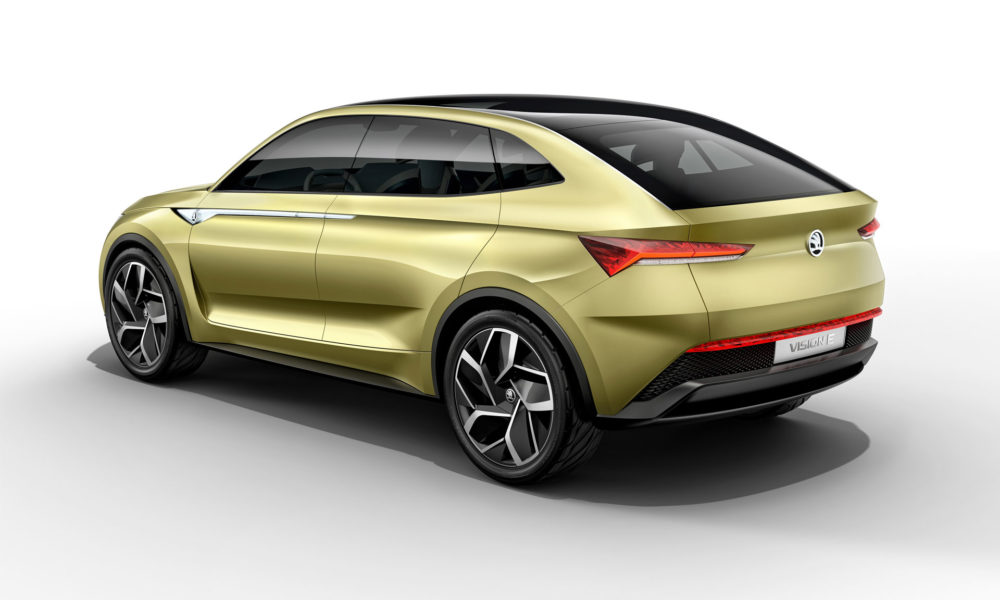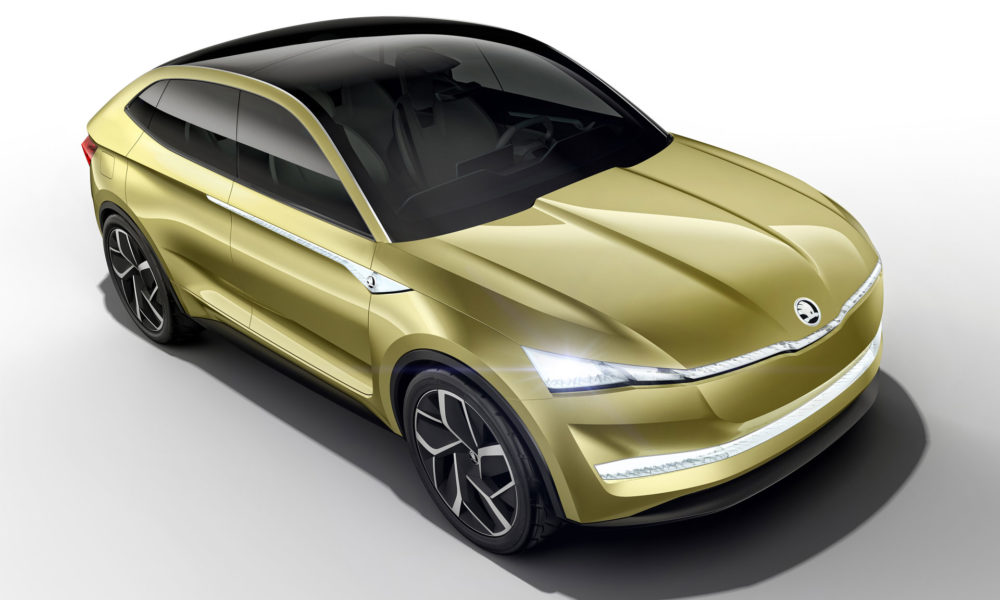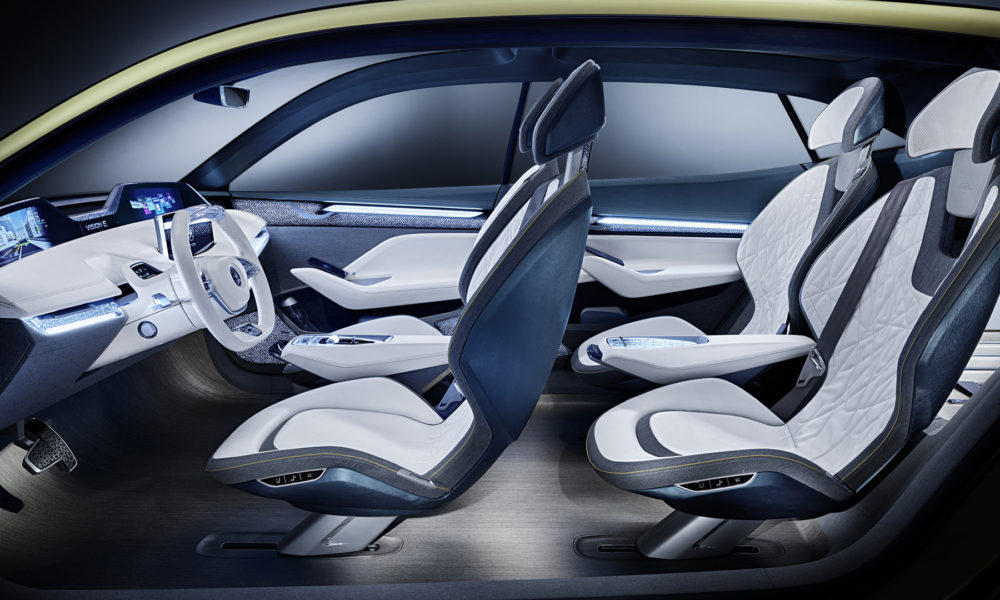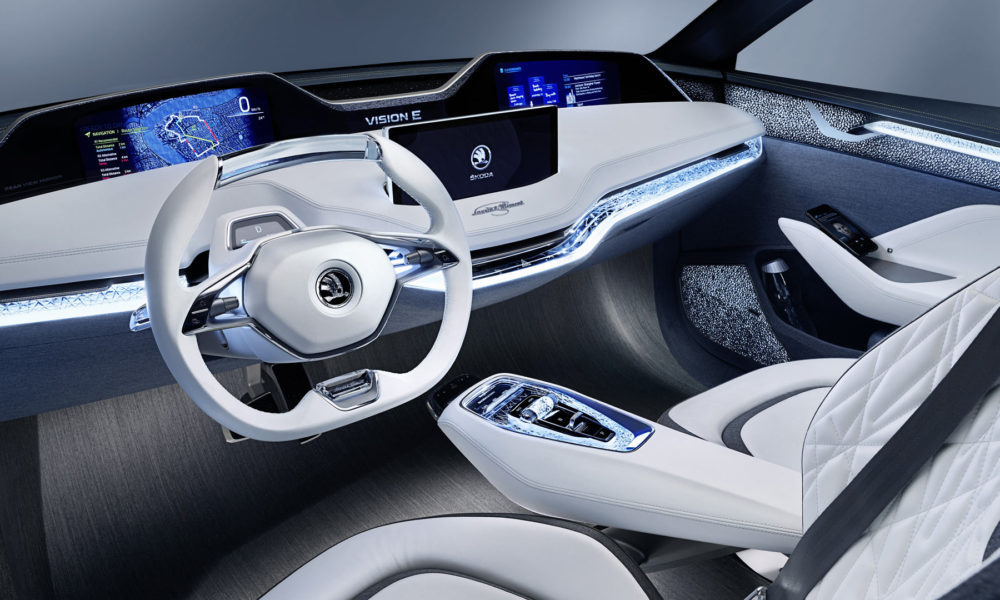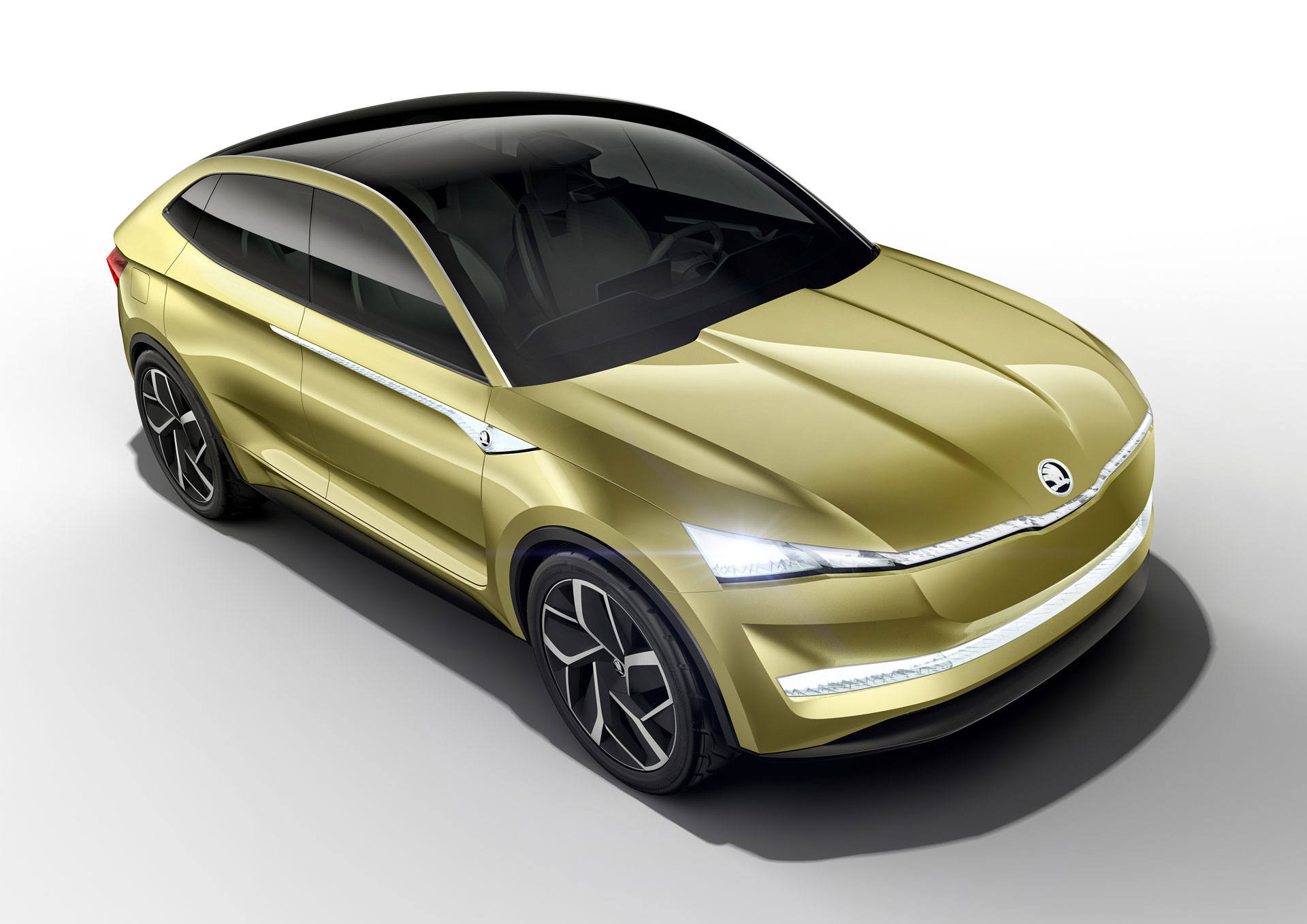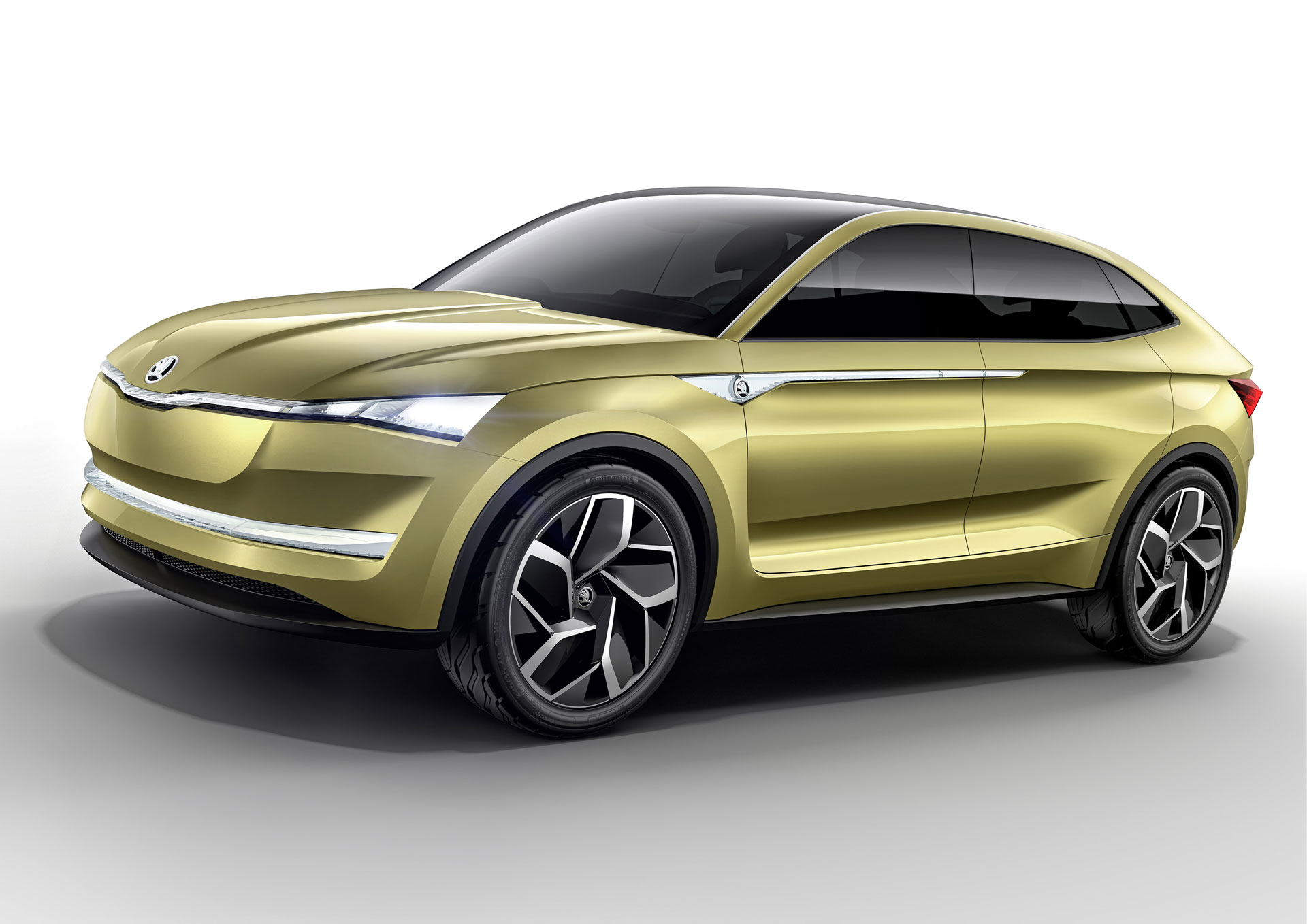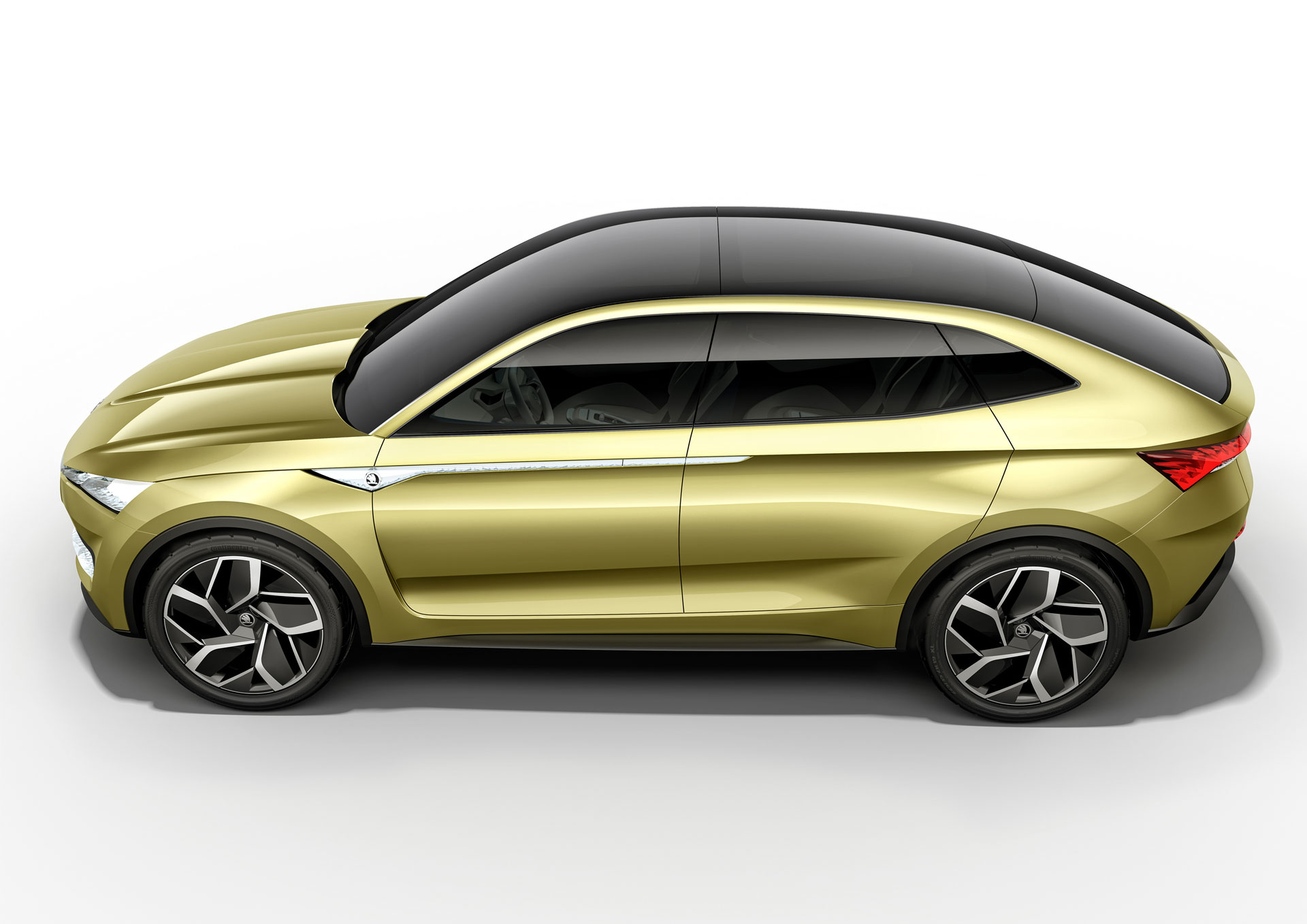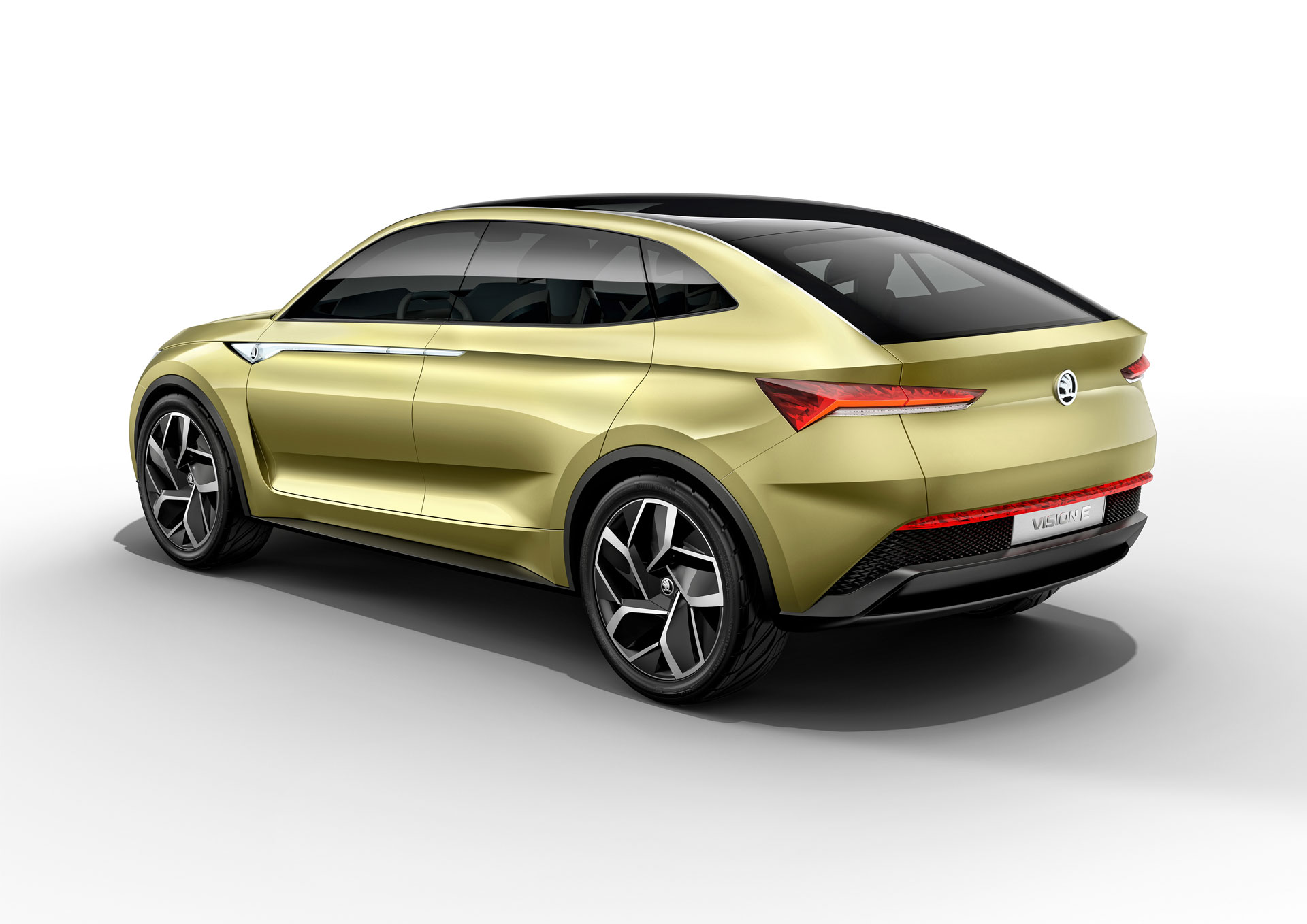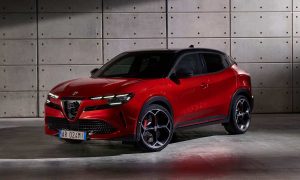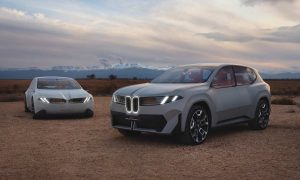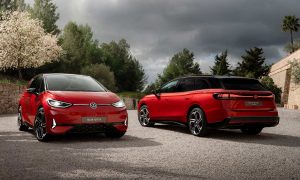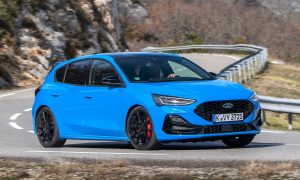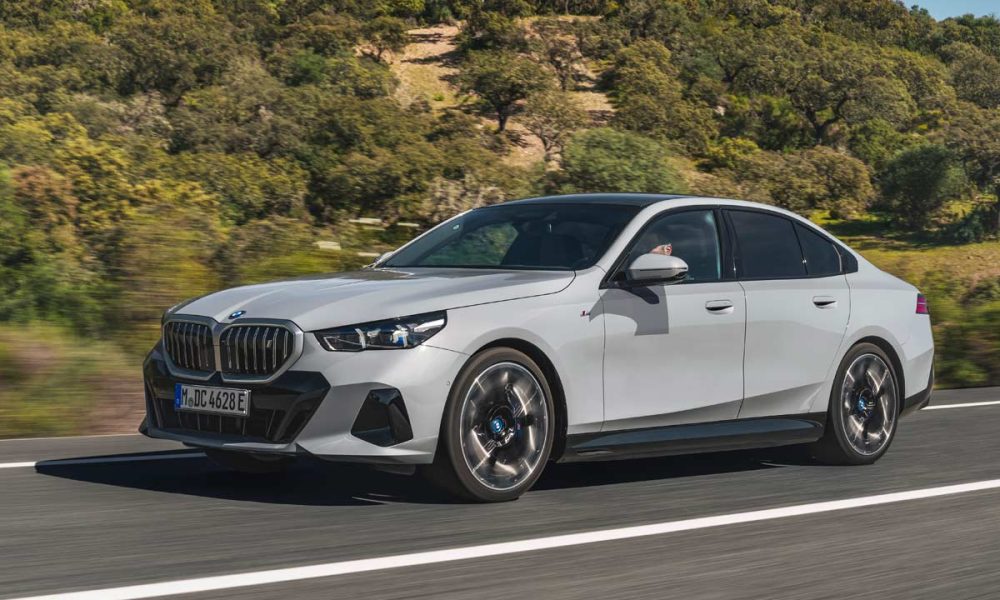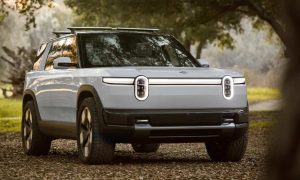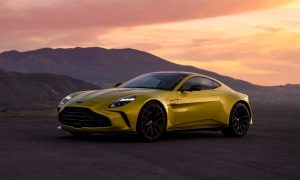As a part of its electric mobility strategy, Skoda unveils the Vision E concept at the Auto Shanghai 2017. Vision E is the brand’s first all-electric vehicle, expected to be in the market by 2020.
As with all-electric cars, there is no traditional radiator grille. The Vision E’s exterior features a wide LED lighting strip that runs across the vehicle’s entire width and flows into slim, triangular headlights at both ends. The headlights borrow Matrix LED technology from Skoda’s cousins at Ingolstadt. Additionally, the lighting control is connected to a front camera to analyze the individual traffic situation. A LED lighting strip runs below the rear line and a black apron rounds off the rear section’s bottom part.
There are no wing mirrors but rather cameras that transfer what is happening around the vehicle onto interior displays. An LED lighting strip runs through the vehicle’s front half. It is tapered towards the body’s centre and therefore underlines the wedge shape, as well as giving the side view additional contour. The rear doors and tailgate are electric.
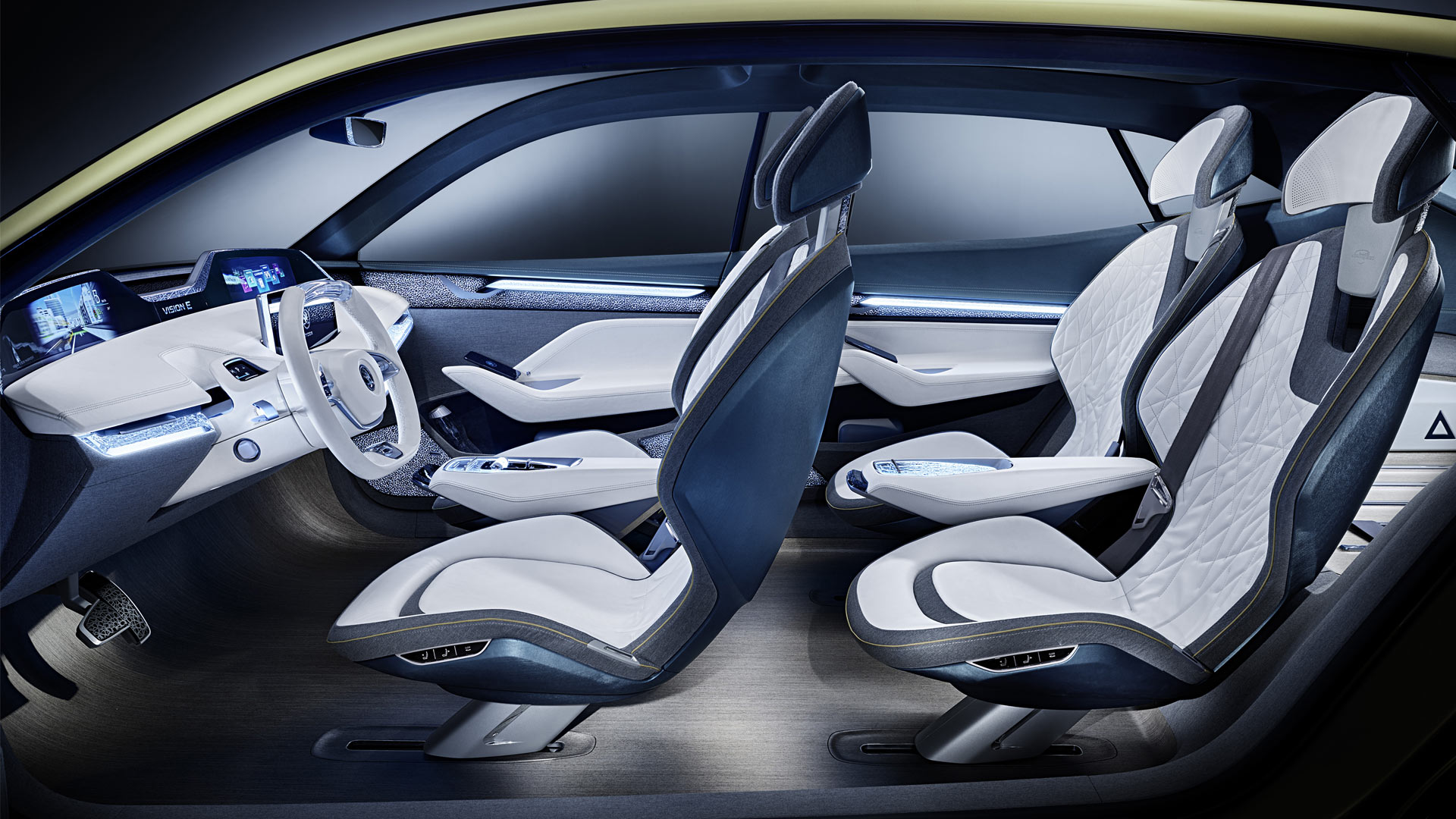
On the inside, the seats can be rotated by up to 20 degrees. They turn towards the outside when the doors are opened, which makes getting in easier. After closing the door, they return to their initial position.
Besides the cockpit screen for the display of conventional vehicle data, there are further displays for the occupants. The central touchscreen sits in the middle of the dashboard so that the driver and front passenger can operate and read all of the important functions and services.
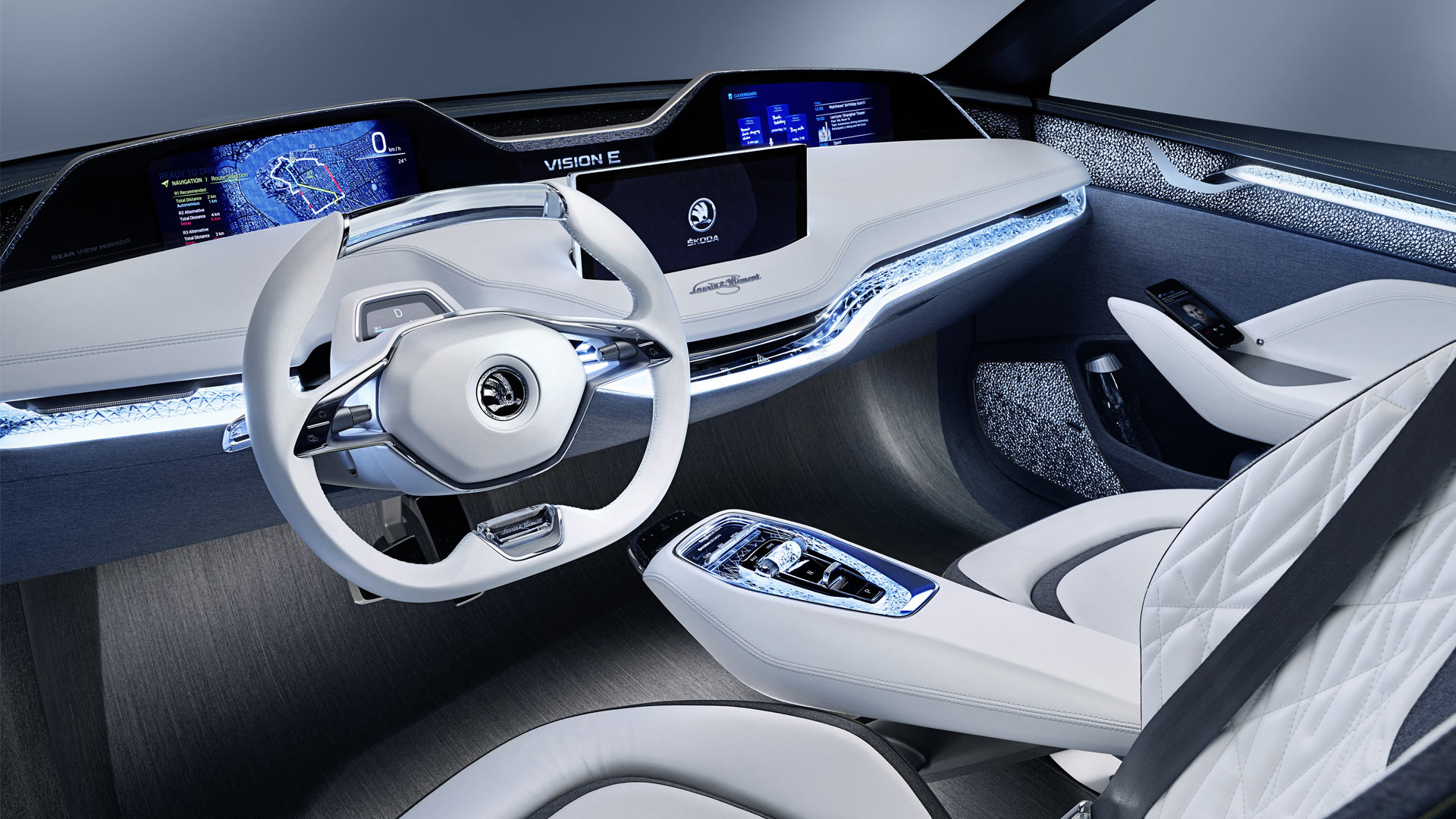
In addition, there are individual displays for the front and rear passengers to allow for the operation of numerous functions such as information and entertainment. The front passenger display is integrated into the dashboard whilst the displays for the rear passengers are in the backrests of the front seats. Furthermore, the front and rear passengers can control their individual entertainment program using their own touch displays. The front passenger’s control unit is incorporated into the right armrest; the rear passengers’ control unit is located between the two rear seats.
A Phonebox is built into the inside of each door, allowing inductive charging of the occupants’ smartphones. The smartphone’s personal settings, data and information can be accessed via the individual displays. Ambient lighting is integrated into the doors’ decorative strips and below the dashboard. It can be set to one of ten colors and can therefore be adjusted to the individual mood.
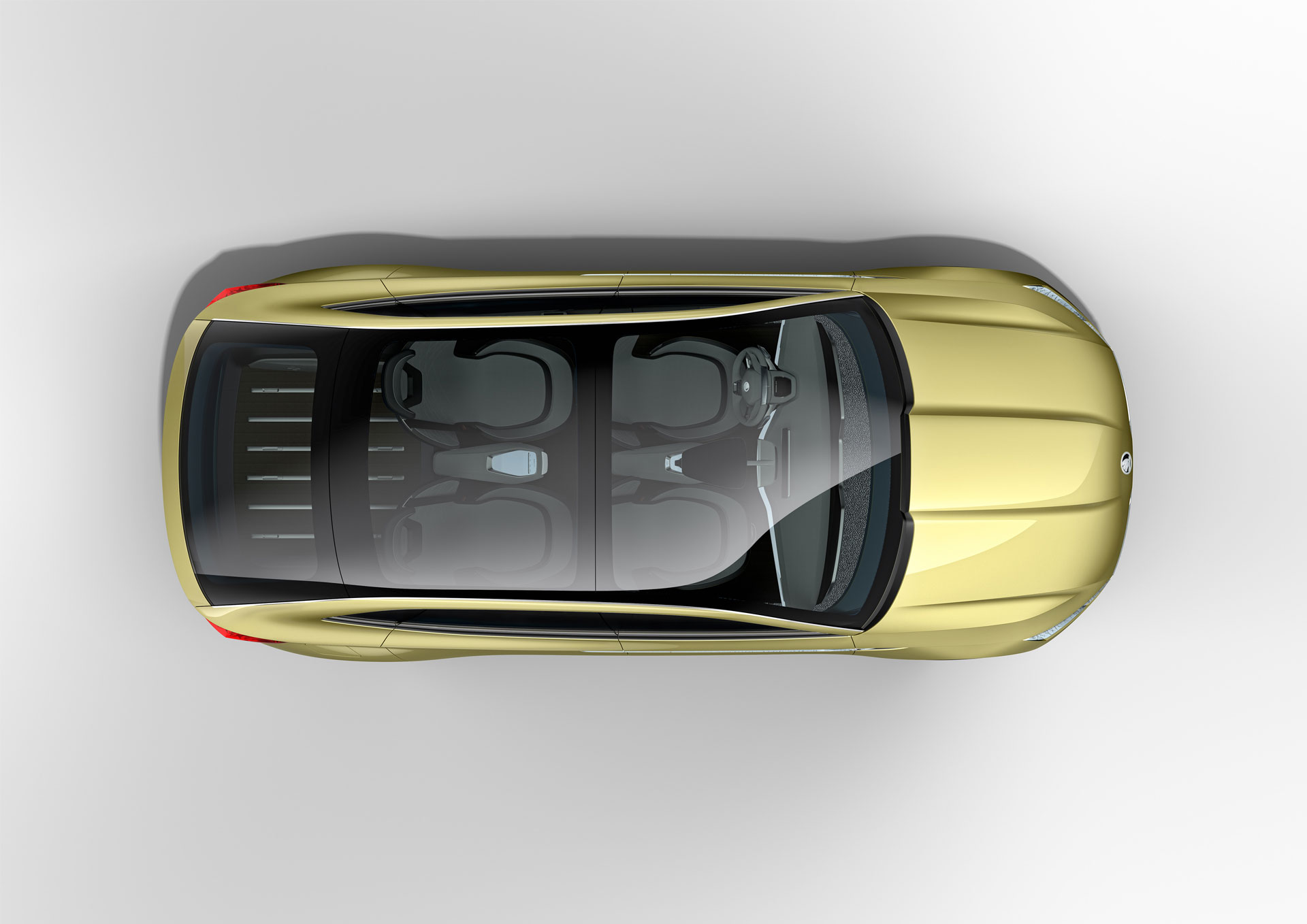
As soon as the vehicle drives autonomously, you can slide the front seats back and relax. At the same time, the steering wheel is raised, making more space. Speaking of the autonomous tech, the Vision E features level 3 autonomous driving capability. It can operate independently in traffic jams, complete motorway journeys using autopilot, stay in lane or take evasive actions, overtake other vehicles, independently look for free parking spaces and drive in and out of parking spaces autonomously. All of this is aided by various sensors with different ranges and numerous cameras that monitor the traffic situation.
As a part of safety tech, there’s an Eye Tracking functionality which constantly monitors the driver’s eye movements. This feature can also be used to analyze how alert the driver is. When the driver’s concentration is waning, Driver Alert fatigue detection is activated and prompts the driver to take a break. There’s also a heart rate monitor, which constantly monitors the driver’s heart rate and warns them if it is at a dangerous level. Should a medical problem arise, the Vision E can use its automatic driving functions to steer the car onto the hard shoulder without the driver’s help and bring the car to a stop. In the event of an emergency, the system can call the emergency services.
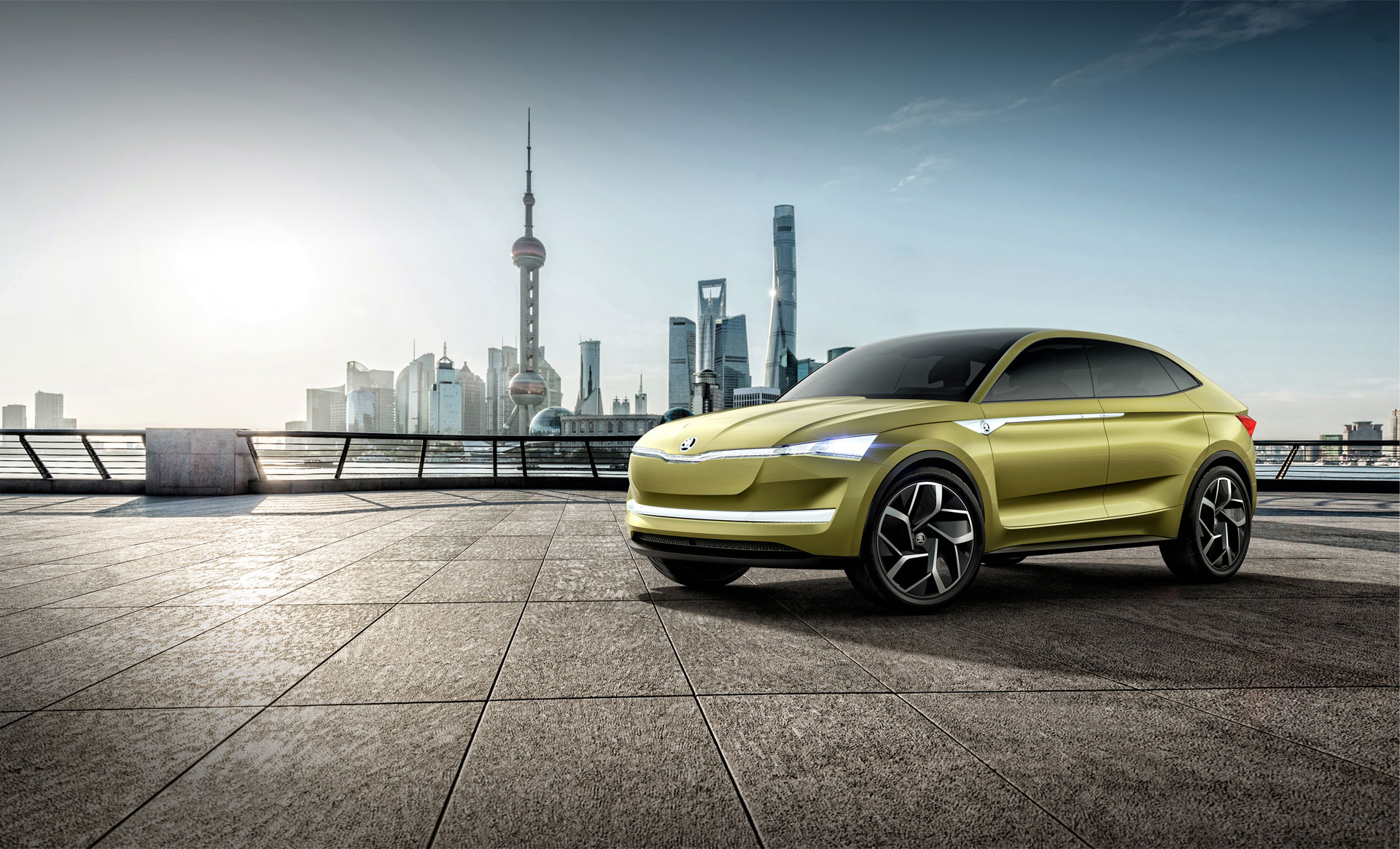
Power
The Skoda Vision E is built on VW Group’s MEB (modular electrification toolkit) platform. With its two electric motors, the power output is rated at 225 kW (302 hp), and can achieve a top speed of 180 km/h. The electric motors permanently drive all four wheels. The lithium-ion batteries and brake energy recovery enable a range of up to 500 km. The Vision E also features inductive charging via a floor panel in the owner’s garage. Quick charging is also possible, 80 percent of battery capacity in just 30 minutes.
The vehicle measures 4,688 mm long, 1,924 mm wide and has a height of 1,591 mm. The wheelbase is measured at 2,851 mm. Skoda plans to have five pure-electric vehicles by 2025.

Leave a Reply
Note: Comments that are unrelated to the post above get automatically filtered into the trash bin.
